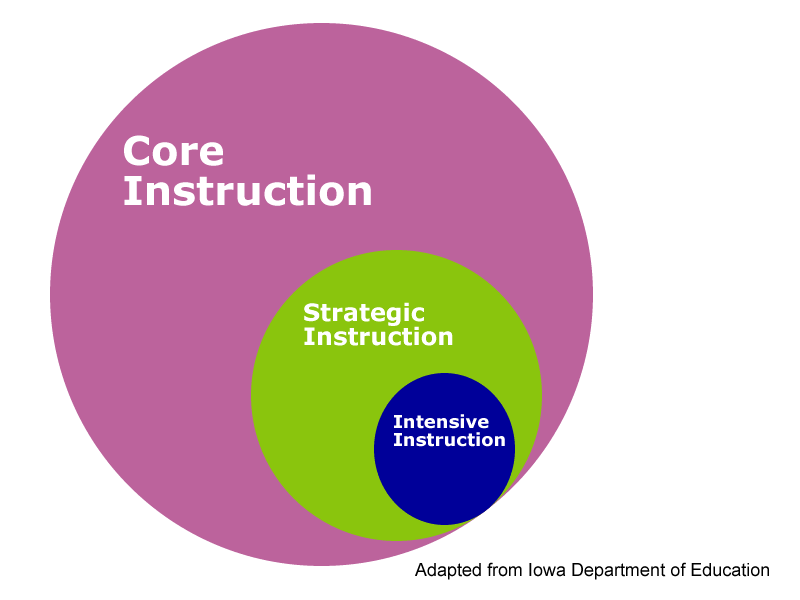Levels
3 Tier Intervention Support Model
Educational problems have three distinct levels of severity. These levels correspond to the three-tiered model. The 3 Tier Support Model is designed so all students receive the instruction that they require. It is designed so movement is fluid and flexible. Mild educational problems are addressed in the core area of instruction. A severe problem requires strategic intervention. The most severe educational problems are in need of intensive interventions. Core problems are issues that impact the entire classroom. The strategic problems may impact between 10% and 15 % of a classroom and may require specialized instruction or intervention suited for that population. The intensive needs students should be less than 5 % of a student population.
Core Instruction
This is the district foundation of curriculum and instruction. Every teacher uses a variety of research based instructional techniques for classroom instruction. All students are screened and given group interventions. Classroom teachers monitor assessment benchmarks at regular intervals, usually three times per year, that are matched explicitly to each grade level's expectations. Interventions at this level are oriented to whole group instructional practices. Educators then differentiate instruction and evaluate the need for intervention.
Strategic Instruction
This is for students not making expected progress or students requiring instruction in addition to core instruction. The determined interventions are goals based on data from the screening. Teachers use evidence based intervention and targeted instruction in the identified area of concern. Teachers must use more frequent progress monitoring and evaluate the effectiveness of intervention. Instruction is provided to smaller groups of students with similar needs. Schools need to match trained personnel to appropriate intervention.
Intensive Instruction
This tier is for students not making expected progress or greatly exceeding expectations.
An evaluation conducted by a multidisciplinary team using diagnostic assessment with multiple sources of data including information from the interventions from tiers one and two. More frequent progress monitoring is used along with evidence based strategies to constantly monitor the effectiveness of the strategies .
Instruction is provided to individuals or small groups of students with similar needs. Intensive instruction may temporarily replace core instruction to increased timing and intensity of instruction.

